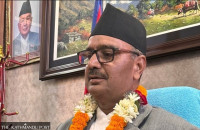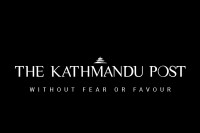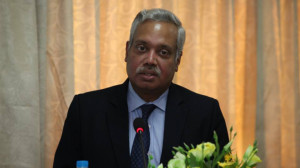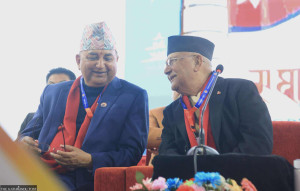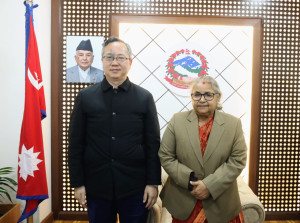National
President authorises army mobilisation for upcoming elections
Integrated security plan envisions mobilisation of around 325,000 personnel including temporary police.
Post Report
President Ramchandra Paudel, in the capacity of the supreme commander of the national defence force, on Thursday permitted the deployment of the Nepali Army for the March 5 elections.
Paudel acted on the recommendation of the Sushila Karki cabinet. Assessing the sensitivity of the upcoming elections, the Security Council on November 20 concluded that an early mobilisation of the army was necessary to ensure a sense of security for the polls.
The Cabinet on November 24 recommended the President for the decision. He cleared the way for its mobilisation around 100 days before the mid-term elections.
While the army gets mobilised every election, it is being sent out of the barracks more than three months prior to the polls this time, as concerns over election security mount.
“With the President’s approval, the army will be in the field anytime it is deemed necessary. The mobilisation will be as per the Integrated Election Security Plan,” said Raja Ram Banset, the army spokesperson.
The Central Security Committee meeting, convened by Home Minister Om Prakash Aryal on November 16, had approved the plan prepared by the Ministry of Home Affairs in consultations with the army, the Nepal Police, the Armed Police Force (APF) and the National Intelligence Department. “The Rule of Engagement for the Nepali Army doesn’t specify the date of deployment. However, the presidential approval means it can get to the field whenever needed,” said Manoj Acharya, spokesperson for the Ministry of Defence.
After assessing the need, the integrated security plan envisions mobilisation of around 325,000 personnel including temporary police. Out of the 95,000-strong army, some 79,000 personnel will be deployed until the election is over. Likewise, it envisions mobilising around 72,000 Nepal Police personnel and 33,000 from the armed police. Some 130,000 temporary police will be recruited for around one and a half months to help maintain law and order.
There can be slight changes in the number of temporary police after the number of polling centres and polling stations are decided, said Anand Kafle, spokesperson for the home ministry.
The Election Commission determines the polling centres and stations based on the total numbers of voters. As many as 837,094 new voters were added to the rolls after the election date was announced, taking the total numbers of the voters to 19,005,324. The number is over a million higher than the November 2022 elections when 17,988,570 voters—9,140,806 men, 8,847,579 women and 185 from other categories—were eligible to cast their ballots.
As per the security plan, the forces will be mobilised in three circles. First would be of the Nepal Police including the temporary personnel. Second, will be of the APF backing the Nepal Police and the army will be the final back-up. In addition to the central security committee, there will be provincial security committees led by the principal secretary.
Further down, there are district security committees led by the chief district officer. A security committee led by Sagun Shumsher JB Rana, a member of the commission, has been formed for coordination.
Kafle said security deployment will be based on the sensitivity of a particular district and area.
Some political parties, particularly the CPN-UML, have been raising concern over the security situation claiming that the elections cannot be held in a free and fair manner with thousands of inmates, who fled during the Gen Z protest, still at large. The government also has yet to recover a substantial number of weapons looted on September 9.




 13.12°C Kathmandu
13.12°C Kathmandu


